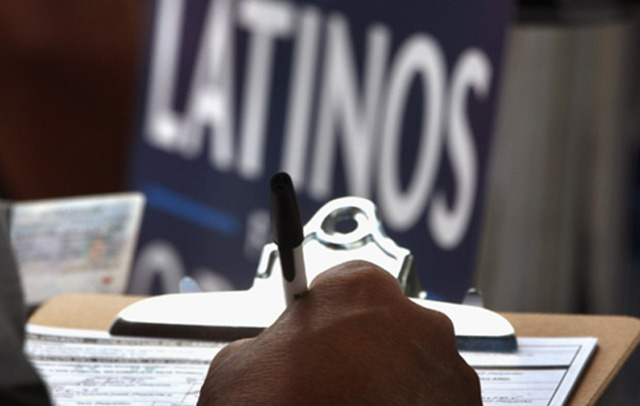How to finally increase the Latino vote so we finally make a difference, maybe

*Don’t let the headline fool you. Ray gives us a serious list of specific things that need to be done in order to increase Latino political participation. It boils down to transformation, personal and community-wide. VL
By Ray Salazar, The White Rhino (5.5 minute read) 
In order to be politically active, we have to believe in our political efficacy: we have to believe that our votes make a difference.
In October, the Pew Research Center reported that 23 million Latinos were eligible to vote in 2012, but only 11 million voted. Pew projected that 27 million Latinos would be eligible to vote in 2016.
Last week, the United States Census Bureau released information about November’s Latino vote. Only 47.6% of Latinos eligible to vote actually voted. In 2012, 48% of Latinos voted. The sleeping giant still hasn’t woken up. Unless significant changes happen in education and jobs, voting rates won’t change.
In order to be politically active and work for change, we have to have experienced a transformation ourselves. This transformation really only comes through a stable job that leads to good income and stable life. Or through education, which can open up new opportunities.
Latino communities struggle in both of these areas.
It’s true. More students graduate from high school: the drop out rate now is around 12%. When I started teaching twenty-one years ago, we talked about a 50% drop out rate.
Today, more Latinos enroll in college: 35%. But a 2014 survey of Latinos in their mid to late 20s found that only 15% earned a bachelor’s degree or more. Only 11% of low-income, first-generation college students who enroll in college earn a degree. In college, we face a new drop-out rate.
Research (and common sense) tells us that the more educated a person is, the more progressive (or liberal) he or she is.
What makes a difference in college completion? According to most of the research about college success from the University of Chicago’s Consortium on School Research: look at how many students who enroll in a college actually graduate.
An easy way to increase this is to provide support systems, such as student mentors, to help students navigate the complicated world of college life.
One change our Latino families can make to improve education outcomes is to look at how we spend our money. I’m hearing over and over from many high-achieving Latino students that “FAFSA didn’t give me anything.” Or “My parents don’t have money.”
But then I find out that a sister had a quinceañera that cost thousands or that the son was given a new car. Materialism and consumerism have manipulated our thinking so that a college education—perhaps because it’s not tangible—becomes a luxury.
And then there’s credit card debt. The Consumer Financial Protection Bureau found that Latino customers were contacted by debt collectors about credit cards more than whites. While 54% of Latinos contacted discussed credit card debt, less whites contacted discussed the same issue: 44%.
In terms of debt, the difference between what Latinos owe and own is around $13,000. The difference between debt and assets for whites: around $134, 000.
The median income for Latinos is around $13 an hour. For whites it’s around $19.
Systemic issues perpetuate this inequality and lack of political efficacy. So does spending thousands on a quinceañera instead of a college degree.
Add to this the fact that many Latinos still work toward establishing roots. The Latino community outside of the Southwest U.S. or in communities like . . . READ MORE

